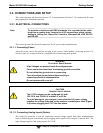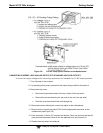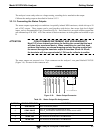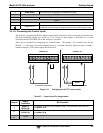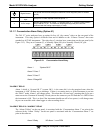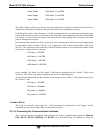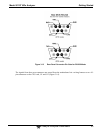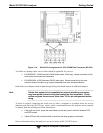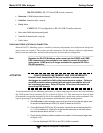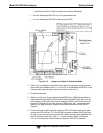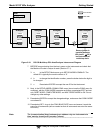
Model 9110T NOx Analyzer Getting Started
Teledyne Analytical Instruments 48
Alarm 3 Relay NO2 Alarm 2 = xxx PPM
Alarm 2 Relay NOX Alarm 1 = xxx PPM
Alarm 3 Relay NOX Alarm 2 = xxx PPM
The Alarm 2 Relay will be turned on any time the concentration set-point is exceeded & will return to its
normal state when the concentration value goes back below the concentration set-point.
Even though the relay on the rear panel is a NON-Latching alarm & resets when the concentration goes
back below the alarm set point, the warning on the front panel of the instrument will remain latched until
it is cleared. You can clear the warning on the front panel by either pushing the CLR button on the front
panel or through the serial port.
In instruments that sample more than one gas type, there could be more than one gas type triggering the
Concentration 1 Alarm (“Alarm 2” Relay). For example, the 9110T instrument can monitor both NO &
NO
2
gas. The software for this instrument is flexible enough to allow you to configure the alarms so that
you can have 2 alarm levels for each gas.
NO Alarm 1 = 20 PPM
NO Alarm 2 = 100 PPM
NO2 Alarm 1 = 20 PPM
NO2 Alarm 2 = 100 PPM
In this example, NO Alarm 1 & NO
2
Alarm 1 will both be associated with the “Alarm 2” relay on the
rear panel. This allows you do have multiple alarm levels for individual gases.
A more likely configuration for this would be to put one gas on the “Alarm 1” relay and the other gas on
the “Alarm 2” relay.
NO Alarm 1 = 20 PPM
NO
Alarm 2 = Disabled
NO
2
Alarm 1 = Disabled
NO
2
Alarm 2 = 100 PPM
“ALARM 4” RELAY
This relay is connected to the “range bit”. If the instrument is configured for “Auto Range” and the
instrument goes up into the high range, it will turn this relay on.
3.3.1.8. Connecting the Communications Interfaces
The T-Series analyzers are equipped with connectors for remote communications interfaces: Ethernet,
USB, RS-232, RS-232 Multidrop and RS-485 (each described here). In addition to using the




